Salesforce: 25 years of Technology Revolution and Social Engagement
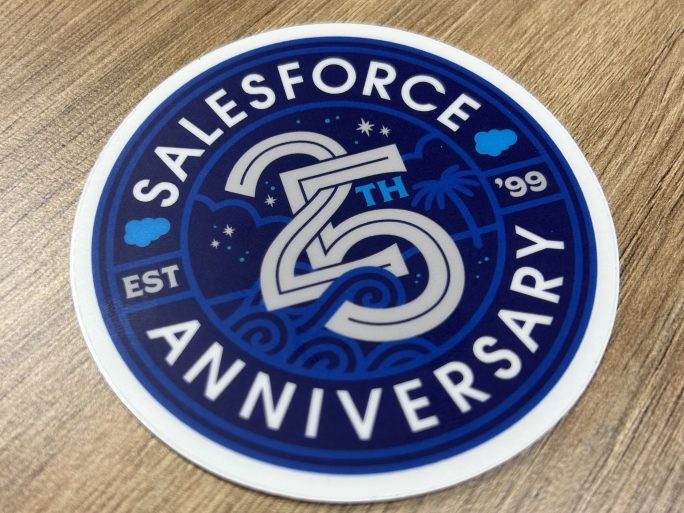
The adoption of SaaS has transformed the global technology landscape, something we owe in large part to Salesforce and its cloud CRM. But the company has also led equality and sustainability initiatives since its inception.
Salesforce is celebrating the 25th anniversary of its founding at a sweet moment for both the technology sector and the company, as Enrique Polo de Lara, SVP and Country Leader of Salesforce Iberia, declared at a press conference.
The company specializing in CRM in the cloud has experienced continuous growth over the last 25 years to become the leading provider of this type of customer relationship management solutions. No less important has been its worldwide relevance in accelerating the adoption of software as a service and pay-per-use, a modality that has been displacing traditional software to the point of leaving it in a residual situation.
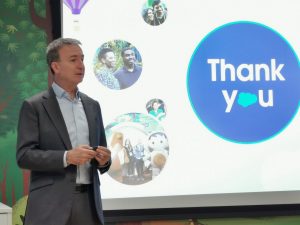
Few would have bet on this fact in 2000 when Salesforce launched the first version of its CRM application. Today, Salesforce enjoys a 22.3% market share in this segment and its revenues are up 11% year-on-year. In addition, as the executive pointed out, operating margin has increased considerably following the restructuring carried out last year.
Salesforce’s history is one of innovation, but also of sustainability and equality, two concepts that in recent years have been highlighted in practically all corporate areas. These are initiatives that the company has been applying in its philanthropic model since 2001, when virtually no one was talking about environmental sustainability or support for diversity and volunteerism.
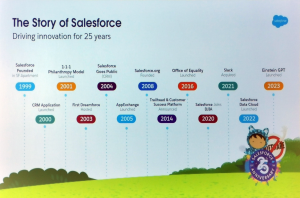
Its “1-1-1” philanthropic model has been pioneering in many respects: it dedicates 1% of its revenues to promoting equality initiatives, encourages 1% of employees’ working time to be devoted to volunteer work, and provides 1% of its licenses free of charge to training and non-profit institutions. It also became a Net Zero company two years ago and uses 100% renewable energy.
Expanding technologies
That first version of its CRM application in the cloud has little to do with the current Salesforce Customer 360, the platform that integrates all the tools, data and experiences that organizations need to manage their resources. Over the years, it has incorporated technologies and functionalities that have made it “a unified source of trust,” according to Gonzalo Goñi, Solution Engineering Director at Salesforce Iberia.
Recent additions such as Einstein’s artificial intelligence in its different modalities or the integral management of information through Einstein 1 Data Cloud, have accelerated its adoption and have made it possible to reach new vertical sectors, including banking and the public sector, two sectors that have traditionally resisted the benefits of the cloud for various reasons.
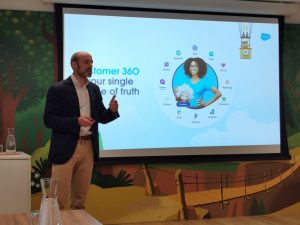
In fact, Goñi emphasized the evolution of tools based on artificial intelligence: predictive analytics, generative AI and, more recently, autonomous agents and systems, capable of performing tasks and helping humans much more efficiently.
Later on, although its true scope and impact on companies and society remains to be seen, general artificial intelligence will arrive, that which is capable of learning and reacting as humans do but much more efficiently and quickly: “We don’t know when or how it will arrive, but it will arrive at some point,” Goñi replied when asked by this writer.
Einstein 1 Data Cloud
While we wait for general artificial intelligence to arrive, Salesforce is proposing Einstein 1 Data Cloud, a platform designed to unlock the use of all the data that organizations manage.
Over the last few years, systems have been implemented to store and manage information, something that has generated enormous complexity in terms of both architecture and data types. It is true that the so-called Data Lakes have also been developed, capable of connecting all these information sources to increase their visibility and orchestration.
However, Salesforce’s approach with Einstein 1 Data Cloud is to centralize all this data and replicate it in a single system (Data Cloud) to make the most of all the information and process it in real time, even if it is constantly changing.
The executive explains that the data integration process in the Data Cloud is carried out once to achieve a common metadata framework: “not all the data has to be there, but with our technology it will be visible”.
![]()
In this way, Einstein 1 Data Cloud connects any data from anywhere, regardless of whether it belongs to any of the Salesforce applications or third-party providers. Once this process is done, Einstein’s artificial intelligence can come into play in its different modalities.
In the case of generative AI, Salesforce has integrated a trust layer (Einstein Trust Layer) that eliminates possible unwanted artifacts such as toxicities or hallucinations inherent in large language models and that can negatively impact query results or even decision-making based on the information obtained.
Finally, it is worth noting that Einstein Trust Layer comes equipped with different levels of security and privacy such as masking of sensitive data or the impossibility for artificial intelligence to retain the information that is usually used by the models to continue learning.
These features seek to comply with the restrictions imposed by the European Union regarding the use of artificial intelligence in a law that has been approved this week in Brussels.
The company claims that Einstein 1 Data Cloud already stores 2 trillion records monthly.
The importance of the ecosystem around Customer 360
The Salesforce channel ecosystem plays a fundamental role as part of the vendor’s expansion strategy.
This is particularly relevant in Iberia, a region that has become the second most important region in EMEA for Salesforce, behind only the United Kingdom.
This is an unusual success in the technology industry in our country, as other regions such as Germany, France or Italy are always ahead of us.
There are several explanations for this. According to Ana Vertedor, Vice President of Alliances & Channel at Salesforce, the number of partners is growing at a year-on-year rate of 30%, and many of them are ideal for bringing Salesforce solutions to the midmarket. It should be remembered that a large part of the organizations in Spain are SMEs, which generates an enormous capillarity where only partners can get to have that closeness with customers and, therefore, generate business.
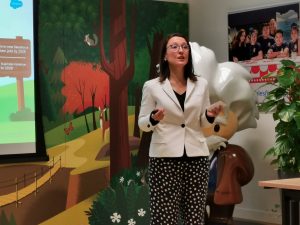
Another factor that is driving the Salesforce channel ecosystem in our region is its commitment to training and the certification program (in Iberia there are already more than 7500 people with at least one certification) to facilitate the availability of professionals with knowledge in this type of technology.
This is of vital importance if we consider the number of professionals that companies will demand over the next few years.
According to IDC data, the Salesforce economy in Spain (driven by cloud solutions and artificial intelligence, as well as the expansion of its ecosystem) will generate more than 157,000 jobs in these areas by 2028, representing a net gain of just over 83,000 jobs since 2022.
All of this and more will be covered during the Salesforce World Tour, the vendor’s main event that will be held in Madrid on April 4, 2024. The company expects to bring together some 2,000 professionals. And Silicon will be there as Media Partner to tell the story.